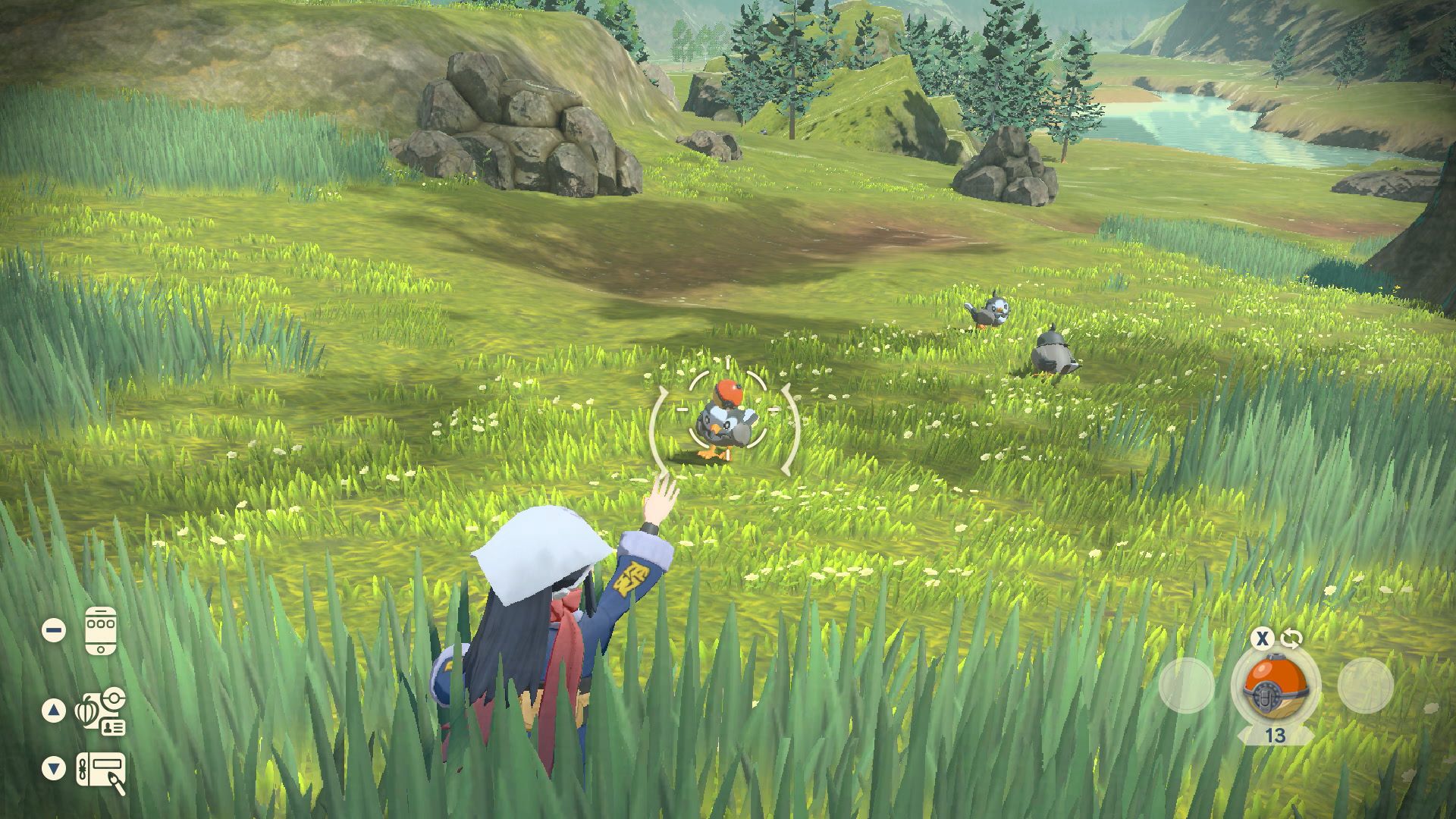Available On: Switch
Played On: Switch
Since 2019’s Pokémon Sword and Shield first teased a semi-open world area of 3D exploration and free-roaming Pokémon, fans have been clamoring for more. Though Pokémon Legends: Areus is technically a spin-off of the main series, it does more to bring the venerable franchise forward than perhaps any Pokémon game before it.
A Long, Long Time Ago
Arceus takes place in the Sinnoh region, the same setting as Gen 4 (Diamond and Pearl), but with a major twist — it’s the distant past. The region is known as Hisui, and is almost entirely wild and untamed. Jubilife village is the only one of its kind, and the primary hub for the entire adventure.
After being transported to this pastoral setting, our player character begins working as a surveyor for the Galaxy Expedition Team. Instead of a desire to be the very best, catch ’em all, and battle eight woefully easy gym leaders, my task is to build the region’s first Pokédex, while researching dangerous space-time rifts that create powerful, aggressive Pokémon.
The shift in story and setting are a breath of fresh air. No longer constrained by linearly journeying from town to town, gym to gym, and route to route, I can freely explore each individual zone, searching for Pokémon and completing side quests.
The Hisui region is not one big open world. Instead it’s broken up into five major areas, not unlike a Monster Hunter game. Each of these areas features different biomes and Pokémon, from the water and flying Pokémon of the Cobalt Coastlands, to the swamp-lovers in the Crimson Mirelands.
I loved taking my time to explore in different directions and find new Pokémon spawning grounds. Completing the Pokédex is far more involved than a single capture; each entry requires several tasks to accomplish, often a dozen times or more, such as feeding berries to wild Pokémon, or witnessing them perform certain moves.
Large, aggressive Pokémon called Alphas are frequently found in certain areas, representing fun and challenging battles against powerful foes that were often five, 10 or 15 levels above my team. Not since being a kid in the 90s has a Pokémon game actually challenged me the way these Alphas could humble my entire team. Capturing and using them in my own party was all the sweeter.
Legends Arceus also improves battling and capturing. In a nod to Pokémon Go and Let’s Go, trainers throw actual Pokéballs at wild Pokémon, hoping to capture them before even needing to battle. I love how sneaking up on unsuspecting Pokémon offers a greater chance of success. Capturing them quickly is a huge time-saver, as every Pokédex entry requires dozens of successful captures.
All this capturing is going to require a lot of Pokéballs. In another series first, I can craft my own Pokéballs using materials found in the wild. Thankfully I don’t have to return to a camp to craft. But the limited inventory is incredibly painful given all the different plants and materials. Expanding my backpack quickly becomes the primary money sink throughout the campaign, and a frequent annoyance.
Have Ball, Will Battle
Battles are familiar to series veterans, with each side taking turns to dish out one of four learned moves. They finally dropped the useless moves nobody cared about such as Growl, trimming the fat off every Pokémon’s bloated moveset.
New mechanics include the Agile and Strong styles; each move, once mastered, can be enhanced (Strong) or decreased (Agile), resulting in a slower or faster attack. A fast attack could even result in taking two turns in a row! It’s not as game-breakingly big as previous additions, such as Mega Evolution, but slides into the battle system much more elegantly.
It’s also not uncommon to fight two or more Pokémon at once if they’re close together, a tricky situation for a single Pokémon to deal with, and another satisfying way that Arceus can challenge veterans.
The only element Arceus doesn’t improve upon is the story. Never a hallmark of the series, the story in Arceus is neither compelling nor terrible. There’s some neat nods to Diamond and Pearl, but in transitioning to a more wild, open area, we lose a lot of NPC interactions. There are almost zero trainer battles, with most character interactions coming from side quests in Jubilife Village.
 The Rating
The Rating
Pokémon Legends: Arceus is rated E for Everyone, with Mild Fantasy Violence. The Pokémon series is nothing if not consistently kid-friendly in style and tone.
The Takeaway
Pokémon Legends: Arceus may technically be a spinoff, but with so many huge leaps forward in nearly every aspect of gameplay, it’s easily the most revolutionary game of the series, and hopefully the foundation on which future games are built.


